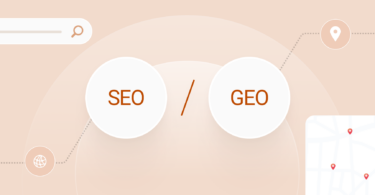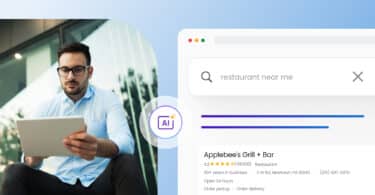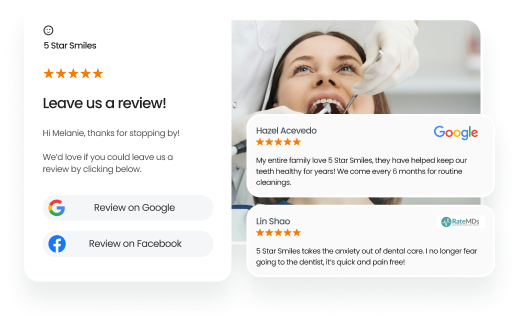Customer segmentation is the backbone of any effective, modern marketing strategy. It empowers businesses to divide their customer base into distinct, meaningful groups, based on behavior, demographics, sentiment, or preferences, so that they can engage each target audience with precision.
Instead of relying on guesswork, brands can now tailor their marketing efforts to the needs, habits, and expectations of each segment.
By investing in a strong customer segmentation strategy, businesses gain clarity on who they’re speaking to, how to reach them, and what truly moves them to act.
Through deep customer segmentation analysis, teams can uncover patterns hidden in data, from survey feedback and purchase trends to online reviews, allowing them to segment customers more intelligently and deliver value at every touchpoint.
In this comprehensive blog, we’ll walk you through the different types of segmentation, proven segmentation models, and how AI is accelerating the way businesses understand and act on customer insights.
Table of contents
- What is customer segmentation?
- What is segmentation analysis?
- Explore customer segmentation models that actually drive results
- Why customer segmentation is essential for business growth
- How B2B and B2C customer segmentation strategies differ and why it matters
- Creating an effective customer segmentation strategy
- How Hudson’s Furniture used AI-powered segmentation to boost reviews, insights, and sales across 14 locations
- Customer segmentation vs. market segmentation
- How to market to segmented customers
- Customer segmentation tools that make it easier
- Real-world customer segmentation examples
- FAQs on customer segmentation
- Final word: Better segmentation equals better growth
What is customer segmentation?
Customer segmentation is the process of dividing your customers into groups or segments based on shared characteristics. These may include demographic factors, geographic location, purchase history, usage patterns, or customer behavior.
The goal? To identify distinct groups so you can tailor marketing strategies, personalize experiences, and drive business decisions with higher precision.
Worth noting: Segmentation is not just for marketing; it also improves product development, customer support, and even pricing strategies.
What is segmentation analysis?
Customer segmentation analysis is the data-powered engine behind personalized experiences and measurable growth. It allows businesses to uncover which specific customer segments exist within their customer base, how they behave, and what drives their decisions, so every touchpoint can be optimized for relevance and impact.
This analysis begins by gathering customer data from sources such as customer surveys, reviews, CRMs, and point-of-sale systems. Using statistical methods or AI-driven models, businesses can then identify patterns and group existing customers by shared traits, preferences, or behaviors.
The result? Smarter targeting, more relevant marketing messages, and a deeper understanding of what fuels customer satisfaction and long-term customer loyalty.
By validating the business value of each segment, brands can fine-tune offerings, strengthen the customer experience, and deliver consistent value across channels.
Pro tip: Advanced customer segmentation software like Birdeye Insights AI makes this process effortless. It instantly analyzes omnichannel feedback, detects sentiment trends, and highlights key performance changes, so you know exactly which segments need attention and why.
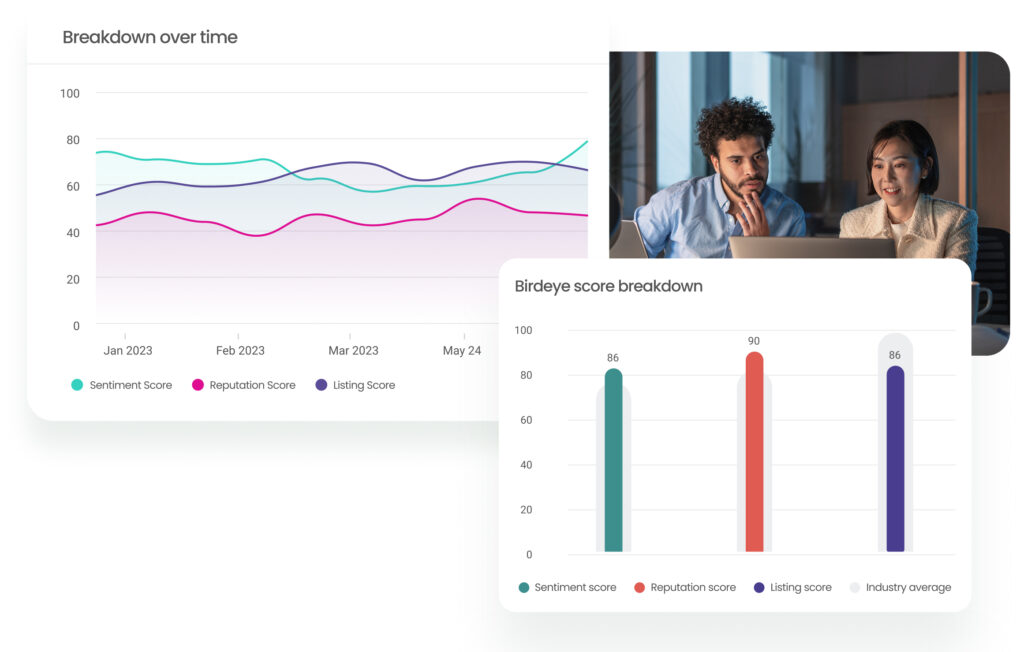
Explore customer segmentation models that actually drive results
A powerful customer segmentation strategy begins with choosing the right models to organize your customer base into different segments, each defined by unique traits, behaviors, or needs.
The goal? To match your marketing efforts with the reality of how your customers think, shop, and interact, so you’re always one step ahead in delivering value.
Each segmentation model serves a specific purpose and provides clarity into customer behavior, preferences, and motivations. Let’s break them down:
1. Demographic segmentation
This is the most common starting point, using attributes like age, gender, income, occupation, or education level to group people.
Best for: Basic personalization, message framing, and selecting communication channels
Example: A brand targeting mid-income families with back-to-school furniture promotions based on income and family structure.
Worth noting: While easy to implement, demographic data alone won’t explain motivations, so it’s best paired with behavioral or psychographic insights.
2. Geographic segmentation
Here, data collection focuses on customer location, country, region, city, or even climate zone. This is key when your products or services vary by location.
Best for: Localized campaigns, delivery availability, and seasonal promotions
Example: Launching a winter-themed collection only in colder regions or offering curbside pickup in dense urban areas.
Quick tip: Segmenting by location also allows teams to optimize regional marketing efforts and inventory planning based on demand patterns.
3. Behavioral segmentation
One of the most valuable models, this method groups customers by customer behavior, including purchase history, frequency, feature usage, and loyalty.
Best for: Personalizing lifecycle campaigns, preventing churn, and rewarding loyal customers
Example: Recommending complementary products based on recent purchases or targeting drop-off users with retention offers.
Pro Insight: Solutions like Birdeye Insights AI analyze reviews, customer experience signals, and usage patterns to surface behavioral trends across touchpoints.
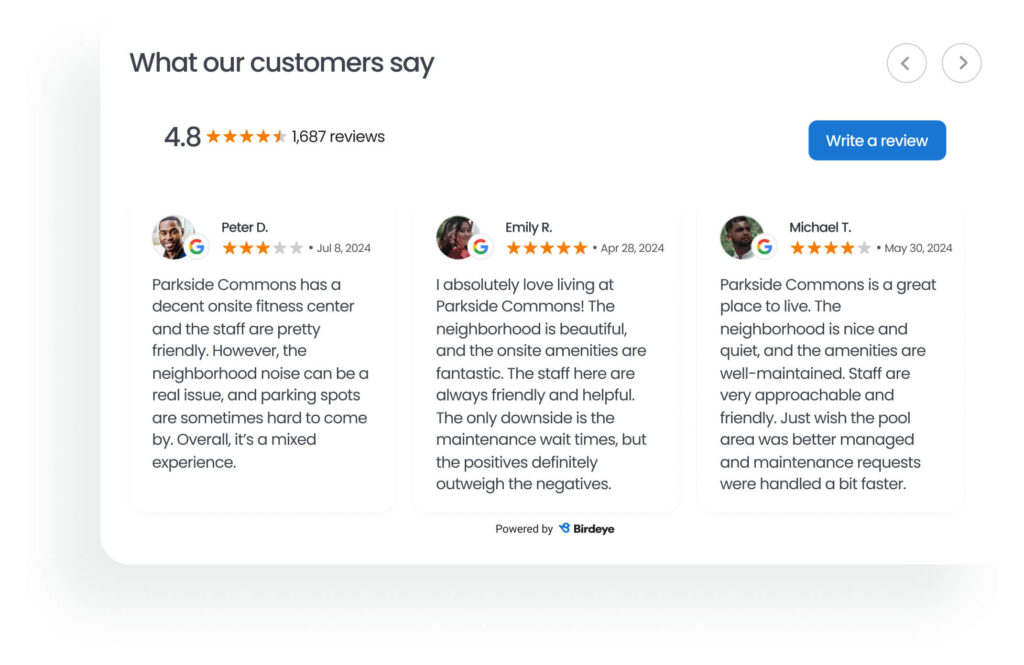
4. Psychographic segmentation
This dives into the emotional and psychological makeup of your audience, what they care about, how they think, and what drives their choices.
Best for: Storytelling, community marketing, and aligning your brand values with the customer
Example: A DTC brand promoting zero-waste packaging to environmentally-conscious shoppers.
Customer behavior influenced by identity or lifestyle often drives loyalty more than discounts. Tapping into these insights creates deeper resonance.
5. Needs-based segmentation
This advanced model groups people based on the problems they’re trying to solve or the outcomes they want to achieve, regardless of their demographic characteristics.
Best for: Tailoring support experiences, onboarding flows, and product positioning
Example: Segmenting users based on whether they value speed, affordability, or ease of use, then customizing the messaging and solution path accordingly.
Quick tip: Use Birdeye Surveys AI to uncover qualitative feedback at scale. Its logic-based, multi-channel surveys help identify pain points and motivations that traditional data collection methods might miss.
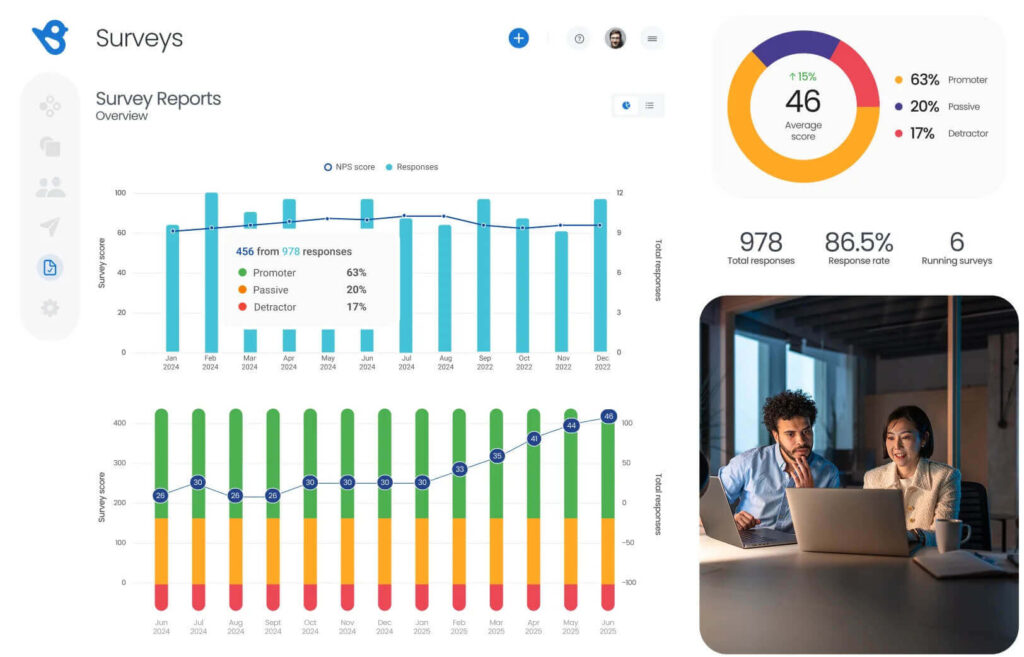
Understand and receive access to your customers better with Birdeye Surveys AI
6. Firmographic segmentation
This B2B-focused model groups companies by characteristics such as industry, company size, revenue, location, and organizational structure.
Best for: Tailoring sales and marketing efforts to specific business profiles, industries, and decision-making structures
Example: A SaaS company targeting mid-sized healthcare providers with compliance-focused messaging and enterprise support packages.
7. Technographic segmentation
This model segments audiences based on the technology tools, platforms, or software they use, often applied in both B2B and B2C settings.
Best for: Personalizing outreach based on tech stack compatibility, digital maturity, or adoption readiness
Example: A CRM provider targeting companies using outdated tools by promoting seamless migration and automation features.
Understanding and applying these models enables businesses to design smarter marketing efforts. It also allows to speak directly to each target audience, and build lasting relationships across different segments of the customer base.
The more precise your segmentation, the more impactful every campaign, interaction, and experience becomes.
Why customer segmentation is essential for business growth
Segmentation is the foundation of high-performing brands. Here’s why it’s mission-critical:
- Helps tailor marketing strategies to specific customer segments.
- Improves customer satisfaction through personalization.
- Enables smarter allocation of marketing budgets.
- Surfaces valuable insights for product development.
- Boosts upselling and cross-selling success.
- Increases customer retention and lifetime value.
- Supports pricing optimization by segment.
- Powers proactive issue resolution with AI pattern recognition.
How B2B and B2C customer segmentation strategies differ and why it matters
When it comes to creating an effective marketing strategy, understanding the distinction between B2B and B2C customer segmentation is crucial.
While the underlying goal to segment customers based on shared traits remains consistent, the approach, data sources, and execution vary significantly across the two models.
These differences shape how businesses engage their potential customers, personalize interactions, and guide the customer journey from awareness to conversion.
B2C customer segmentation: Driving emotion-based personalization
In B2C, segmentation is centered on the individual. Brands rely heavily on demographic segmentation (age, gender, income) and geographic segmentation (city, climate, region).
It helps them to personalize their communication and meet the lifestyle needs of their target audiences. Emotional triggers, convenience, and aesthetics play a big role in purchase decisions.
B2C marketers focus on crafting personalized campaigns that resonate with personal values and real-time behavior. The customer lifecycle is often shorter, but expectations for a seamless experience are high.
Best practices for B2C segmentation:
- Use demographic and geographic segmentation for campaign targeting and product localization.
- Leverage existing customer data from reviews, CRM, and purchase history.
- Analyze customer feedback to optimize touchpoints throughout the customer journey.
Pro Insight: With Birdeye Reviews AI, B2C brands can instantly segment data from customer reviews to identify satisfaction drivers, pain points, and themes that inform messaging tone, promotions, and product offerings.
Birdeye’s State of Online Reviews 2025 report, based on data from over 200,000 businesses, makes one thing clear: customers choose brands with the best reputation, not the lowest price. Whether it’s a dental clinic or a local cafe, people compare stories, not tags.
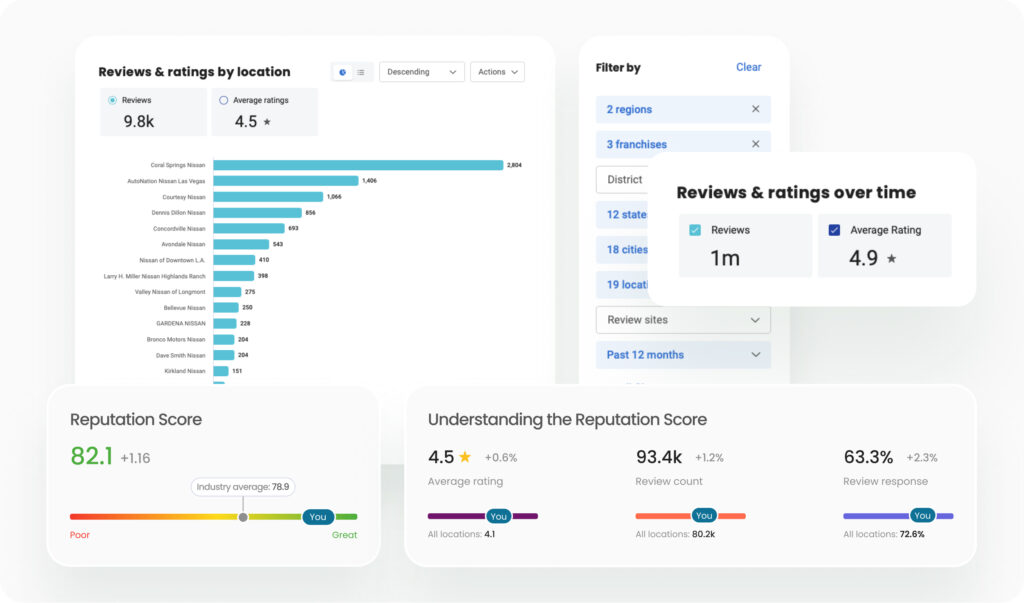
B2B customer segmentation: Optimizing for value and long-term relationships
B2B segmentation is more complex, involving multiple decision-makers, longer sales cycles, and a greater emphasis on ROI. Here, you segment customers based on firmographics, such as company size, industry, purchasing timeline, and role in the buying committee.
Since relationships are often high-value and long-term, customer marketing strategies focus on proving expertise, reliability, and results over time. The segmentation process includes a deeper layer of data analysis, including intent signals and engagement metrics across the funnel.
Best practices for B2B segmentation:
- Use firmographic and account-based data to identify qualified leads
- Prioritize accounts with high customer lifetime value
- Segment by procurement behavior, use case, or compliance requirements
Pro Insight: Solutions like Birdeye Competitors AI help B2B businesses benchmark customer sentiment, visibility, and pricing against competitors by location or industry, revealing strategic gaps and improving positioning.
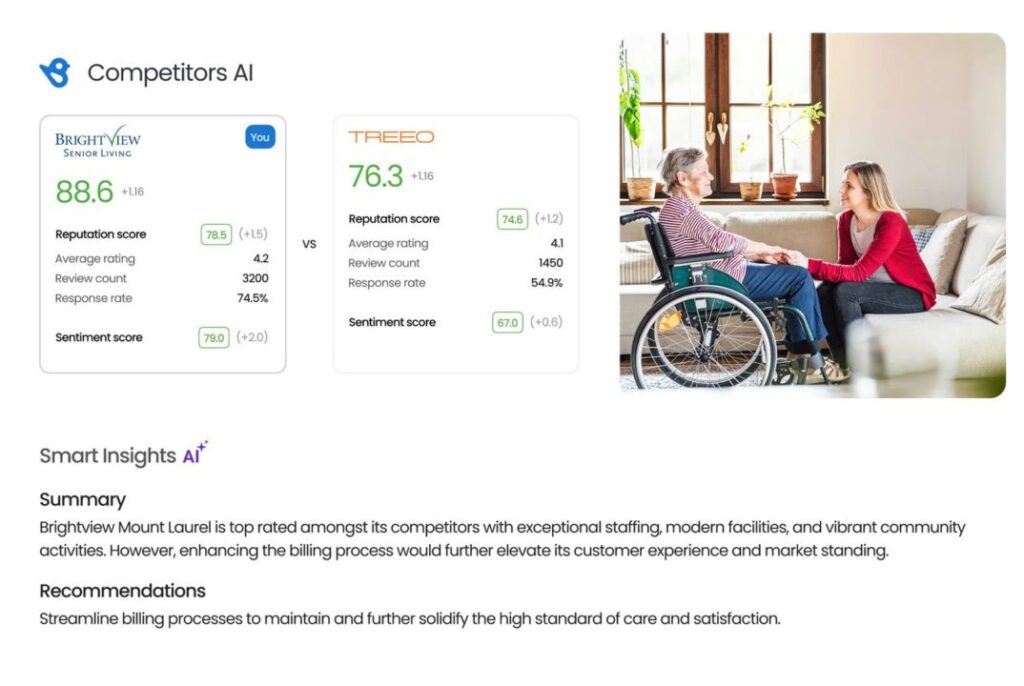
Understanding whether you’re engaging a consumer or a business buyer shapes the marketing strategy from the ground up, from how you segment data to how you communicate value.
By tailoring your approach with the right tools and insights, you’ll move from generic outreach to laser-focused customer engagement, whether you’re dealing with one customer or an enterprise buying committee.
Creating an effective customer segmentation strategy
Here’s how to build a winning segmentation strategy step-by-step:
1. Organize customer data
Start by gathering and unifying data from customer relationship management (CRM), surveys, online reviews, social media, website analytics, purchase history, etc.
2. Identify patterns & common characteristics
Use segmentation analysis to group customers based on shared traits such as demographics, behavior, purchase frequency, feedback sentiment, and service usage. Look for natural clusters that can inform your marketing or service approach.
From data to growth, one segment at a time.
Want to see the impact of Birdeye on your business? Watch the Free Demo Now.
3. Choose the right customer segmentation models
Decide which types of segmentation best fit your business goals:
- Demographic (age, gender, income, education)
- Geographic (location, region, climate)
- Behavioral (purchase patterns, product usage, brand loyalty)
- Psychographics (lifestyle, values, interests)
- Technographic (device, software, platform preferences)
- Needs-based (motivations, pain points, solution requirements)
4. Use AI tools for deeper insights
Tools like Birdeye Insights AI can analyze customer reviews to reveal a reputation score, hidden patterns, and sentiment trends that you might miss manually. These insights help refine segmentation at scale and in real time.
5. Track performance and refine continuously
Use insights from surveys, reviews, and behavioral data to spot trends and shifts in customer behavior. Continuously refine your segments to improve targeting, messaging, and campaign results.
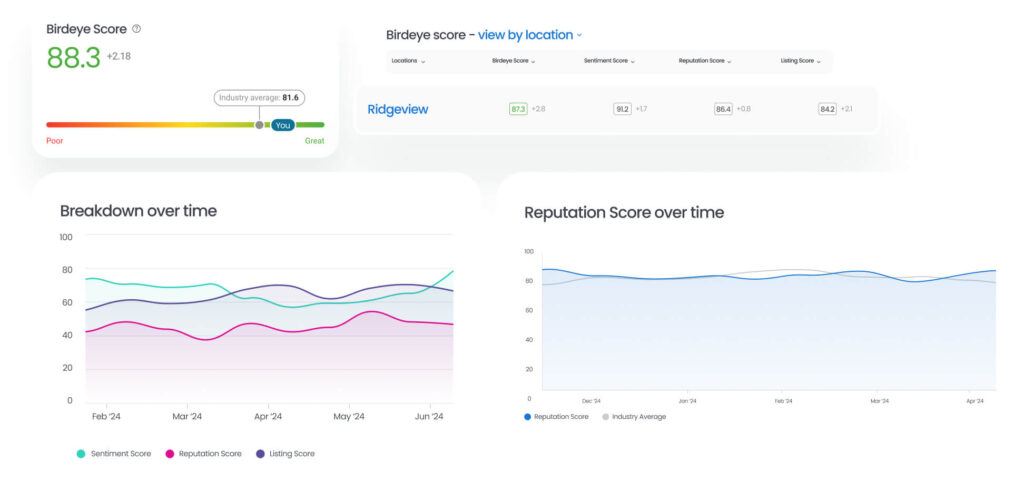
How Hudson’s Furniture used AI-powered segmentation to boost reviews, insights, and sales across 14 locations

The brand
Since 1981, Hudson’s Furniture has delivered premium, customizable furniture across Florida, serving a mid-to-high-end customer base.
The challenge
Needed actionable insights across 14 locations; the previous platform lacked real-time segmentation.
The solution
With Birdeye’s Insights AI, Birdeye Surveys AI, and Birdeye Reviews AI, Hudson’s automated feedback collection, analyzed sentiment by store, and increased review volume to 7,200+ while achieving a 4.7-star average. Their segmented feedback helped fine-tune sales and customer support strategies at scale.
Learn more about Birdeye and Hudson’s Furniture case study
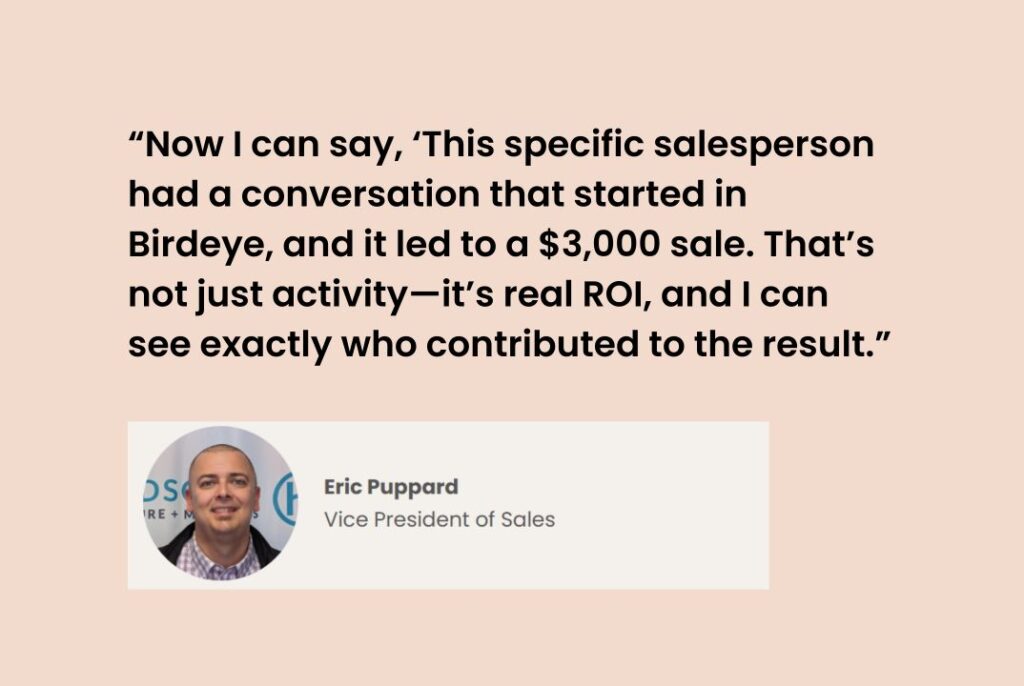
Customer segmentation vs. market segmentation
Let’s clear this up:
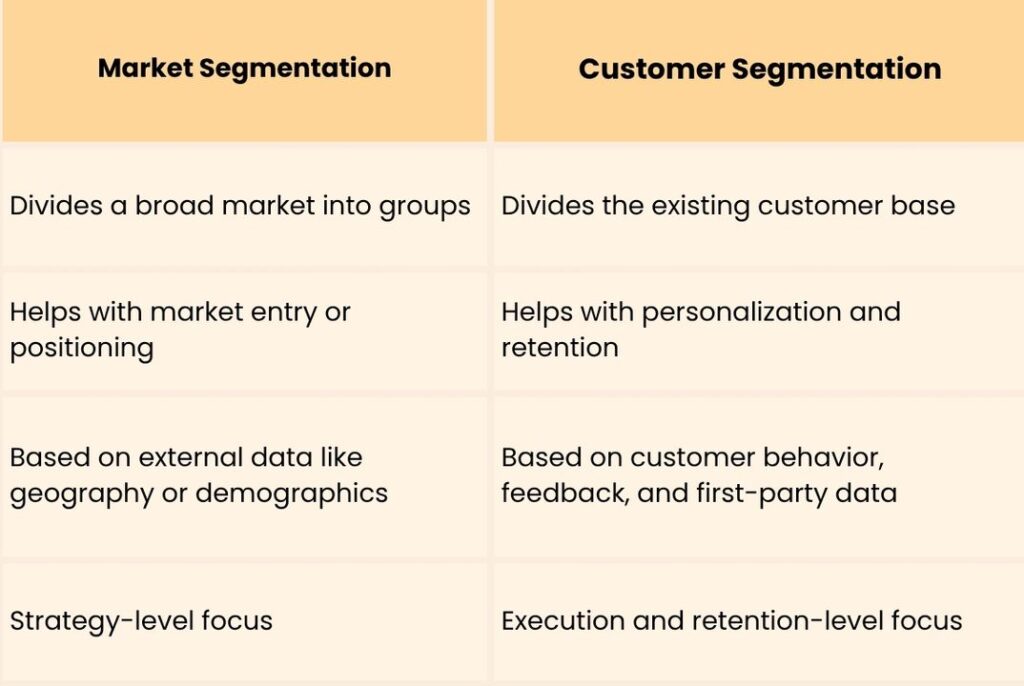
Quick tip: Use both in parallel. Start with market segmentation to target the right audience, and then go deep with customer segmentation to retain them.
How to market to segmented customers
Once you’ve created segments, here’s how to use them:
- Create personalized marketing messages aligned with segment needs
- Tailor content formats and channels by segment (e.g., SMS vs. email)
- Launch targeted campaigns based on segment value or journey stage
- Set up automated feedback loops using solutions like Birdeye Survey AI
Example: Segment customers by satisfaction score (NPS) and send follow-up offers to Promoters while addressing issues with Detractors through personal outreach
Customer segmentation tools that make it easier
Here are essential tools that streamline the customer segmentation process:
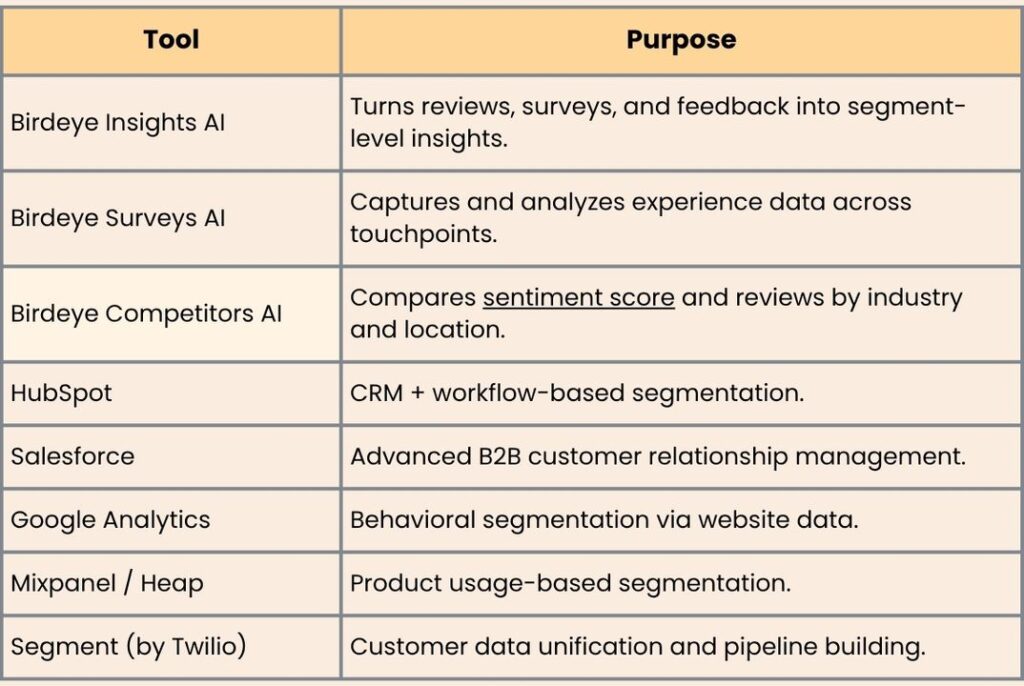
Worth noting: Birdeye’s suite of GenAI solutions, especially Birdeye Insights AI, helps you move from raw feedback to action with zero delay.
Real-world customer segmentation examples
- A retail chain segments customers by geographic location to push in-store offers by region.
- A dental network uses behavioral segmentation to re-engage patients after a no-show.
- A SaaS company uses psychographic segmentation to offer different onboarding for technical vs. business users.
- Hudson’s Furniture uses Birdeye Insights AI to segment NPS data and identify satisfaction drivers by store.
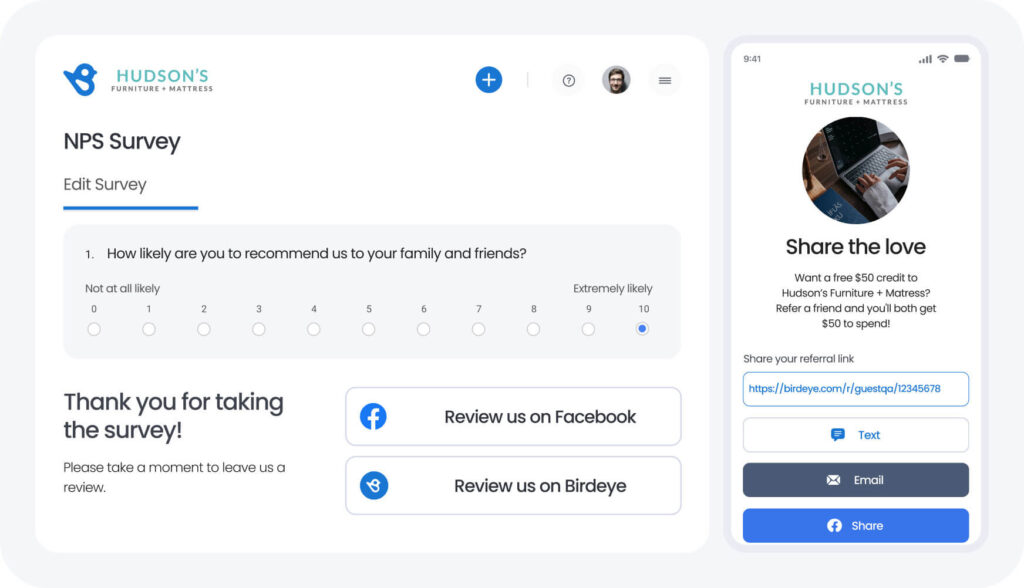
5. Multi-location gyms group customers based on usage patterns and upsell personal training.
FAQs on customer segmentation
Customer segmentation is the process of dividing your customer base into groups based on shared traits, such as demographics, behaviors, or purchase history, to deliver more targeted marketing and better customer experiences.
The core customer segmentation models include demographic, geographic, behavioral, and psychographic segmentation.
Customer segmentation analysis involves using data science and feedback tools to group customers based on patterns in behavior, sentiment, or demographics. Solutions like Birdeye Insights AI help automate this process.
Yes. Solutions like Birdeye Insights AI and Survey AI use predictive analytics and sentiment detection to group customers into actionable segments faster and more accurately.
Examples include segmenting by NPS scores to prioritize retention efforts or by region to launch location-based campaigns. Hudson’s Furniture saw major gains using Birdeye’s segmentation to link reviews, surveys, and sales outcomes.
Final word: Better segmentation equals better growth
Your success hinges on how well you understand your customers, not in broad market segments, but in specific segments shaped by real behaviors and needs.
Segmentation is the process of turning scattered customer feedback into actionable insight. It helps you identify patterns, uncover common characteristics, and define target segments that are primed for engagement.
Platforms like Birdeye’s AI suite take you beyond guesswork, transforming raw segmentation data into personalized strategies that drive effective marketing campaigns, a stronger customer experience, and higher retention.
Start by organizing your customer data, choose the right models for your business, and let AI guide your next move. Because when segmentation is done right, growth metrics are more than a wishlist; it’s a strategy. Watch a Birdeye demo now.

Originally published





